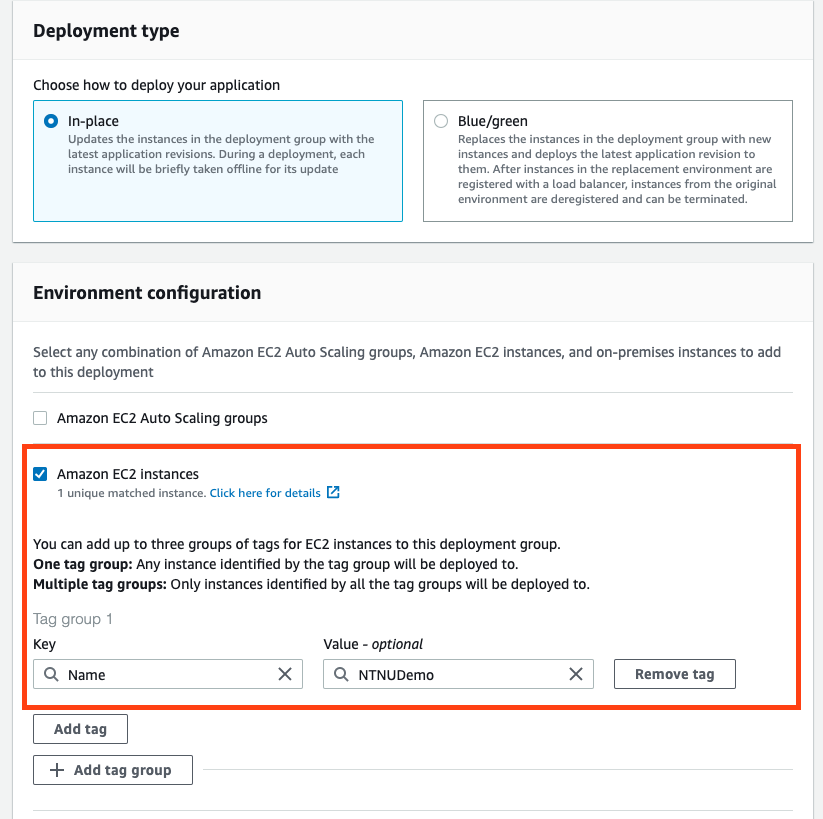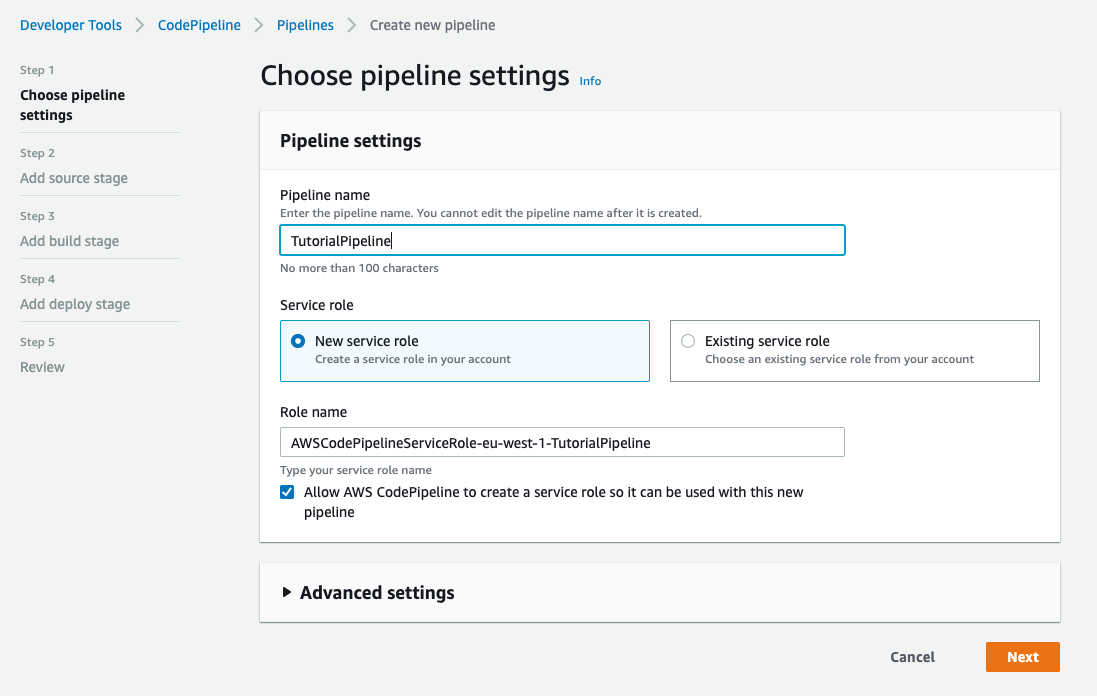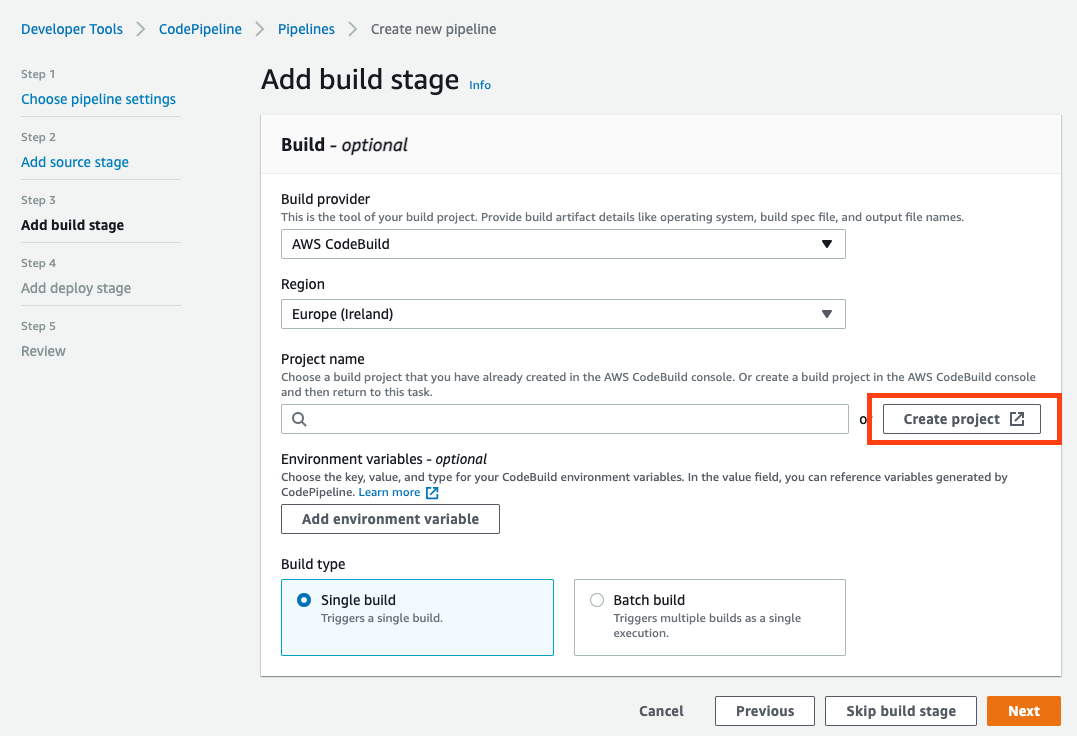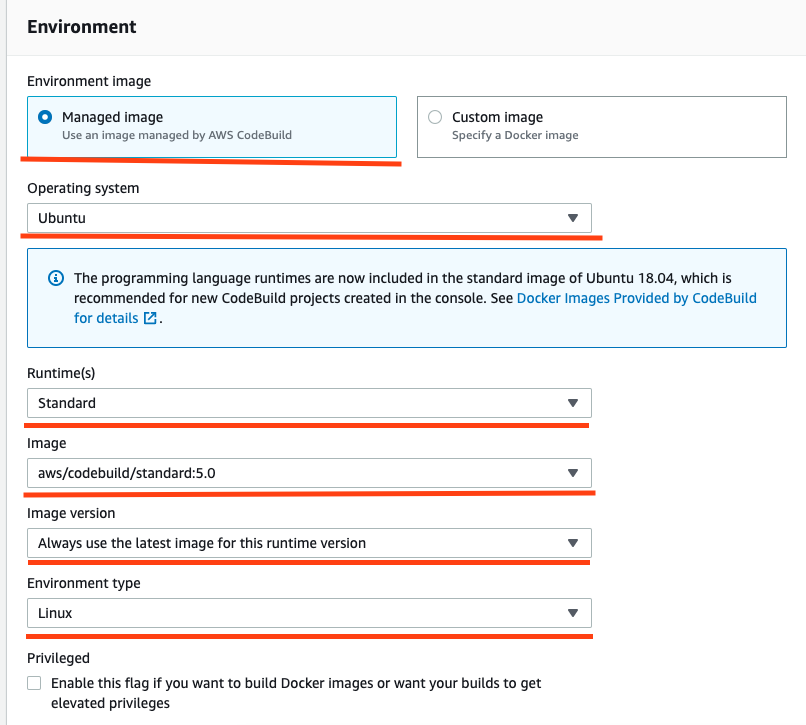This is a demo project to learn how a pipeline works. Try deploying the demo to an AWS EC2 instance by using AWS CodePipeline, CodeBuild and CodeDeploy.
Follow the steps below to deploy the code.
Create a virtual machine on AWS called an "EC2 instance". Read the steps in this guide to get started. Or just google "Create EC2 AWS" to find other guides you might perfer :)
NB! It is very important that you tag your VM. The tags is what the pipeline will use to deploy to the correct VMs. You can add tags after you have created the EC2 (as in the image below):
Create an IAM role for the EC2 machine. The IAM role needs to have the following policy: AmazonEC2RoleforAWSCodeDeploy. It will give your EC2 the right permissions allowing you to deploy code to the machine. To learn how to create an IAM role and policy use this guide.
Use the part saying "Create an IAM instance profile for your Amazon EC2 instances (console)". You can create your own policy as the guide says. Or you can use a policy created by AWS already, in this case AmazonEC2RoleforAWSCodeDeploy.
IAM roles and policies are difficult to understand in the beginning! Don't get discouraged if it does not make any sense :)
Your VM is a clean slate right now. It is like a new computer that has almost nothing installed on it. In order to run the jar file deployed to it you need to install Java.
Connect to your EC2 and use the following command to install Java:
sudo amazon-linux-extras install java-openjdk11
If you don't know how to SSH to an EC2 use this guide.
In addition to Java, you need something called a "CodeDeploy agent" to be able to do deployments.
Install the agent using the following commands. These commands assume you are running Amazon Linux on your VM and that you are in the EU West 1 region (like Ireland).
sudo yum install ruby
sudo yum install wget
cd /home/ec2-user
wget https://aws-codedeploy-eu-west-1.s3.eu-west-1.amazonaws.com/latest/install
chmod +x ./install
sudo ./install auto
Use this command to make sure your CodeDeploy agent is runnign:
sudo service codedeploy-agent status
AWS needs some files that exist in this project to know how to deploy your code. The appspec.yml file is used by the deployment part of the pipeline called CodeDeploy. buildspec.yml is used by the build part of the pipeline called CodeBuild.
We will also have some scripts in the /scripts directory. These scripts will run on the EC2 at different times. The start_server.sh script starts the JAR file and runs after the code has been deployed. cleanup.sh is run first, and it deletes the JAR files that already exist on the virtual machine. fix_priviliges.sh makes sure that all files have the correct priviliges so that they can be executed. stop_server.sh is used to kill any java process already running that could interfere with running the new JAR.
-
In AWS you first need to go to the CodeDeploy service. Search for CodeDeploy on AWS. Then start by clicking "Applications" in the CodeDeploy side menu and create a new application. Pick "EC2/On-premise" for compute platform.
-
Now go to the IAM service and create a role again. This is the role that you will give to the CodeDeploy deployment group. Usually you would want to be careful about permissions and only give the CodeDeploy deployment group the permissions it really needs. However, since this is not a real production environment you can just give the deployment group admin rights. Here is how the admin rights IAM policy looks like:
{
"Version": "2012-10-17",
"Statement": [
{
"Effect": "Allow",
"Action": "*",
"Resource": "*"
}
]
}
CAUTION: Admin rights should not be given to services in real life :) it is a typical security vulnerability. You can experiment a bit with this policy and try to make it more specific.
- After creating your IAM role go back to CodeDeploy and find the application you created. Start making a new deployment group. In the "Enter a service role"-step pick the IAM role that you just created (see image below).
-
Pick "in-place" deployment type
-
In "Environment Configuration" pick "Amazon EC2 instances". Here you will have to refer to a Tag group. A tag group means that you have to tell CodeDeploy what EC2 machines you want it to deploy to (see image below):
-
You can leave all the other options as default except one. When you get to the load balancer part, remember to switch off "enable load balancing" (see image below)
-
This deployment group uses the files in /scripts of this project. It also uses appspec.yml for configuration. So study these files carefuly! :) On a different project you would have to change these files for things to work.
-
Go to the CodePipeline service in AWS and click on "Create a new pipeline"
-
For CodePipeline you can let AWS create an IAM role for you. So you can pick "New service role" instead of creating an IAM role (see image below):
- On the second step "Add source stage" connect to your GitHub account. Choose the repository and branch you want to deploy (see image below)
- On the "Add build stage" part pick AWS CodeBuild and click on "Create Project" (see image below). This will take you to a new window where you will create a CodeBuild project. The CodeBuild project is basically what runs commands such as "mvn build" that let you create the JAR-file. You can find the commands that CodeBuild will run in buildspec.yml
- Pick the following options for CodeBuild (see image below)
-
In the textbox where you have to pick a Role ARN create another IAM role with admin priviliges and assign it.
-
After you create the CodeBuild project pick it in CodePipeline. Leave everything as default for the rest. Except, in the "Add Deploy Stage" you have to pick the CodeDeploy project you created.
Hopefully the pipeline should now work! :)







